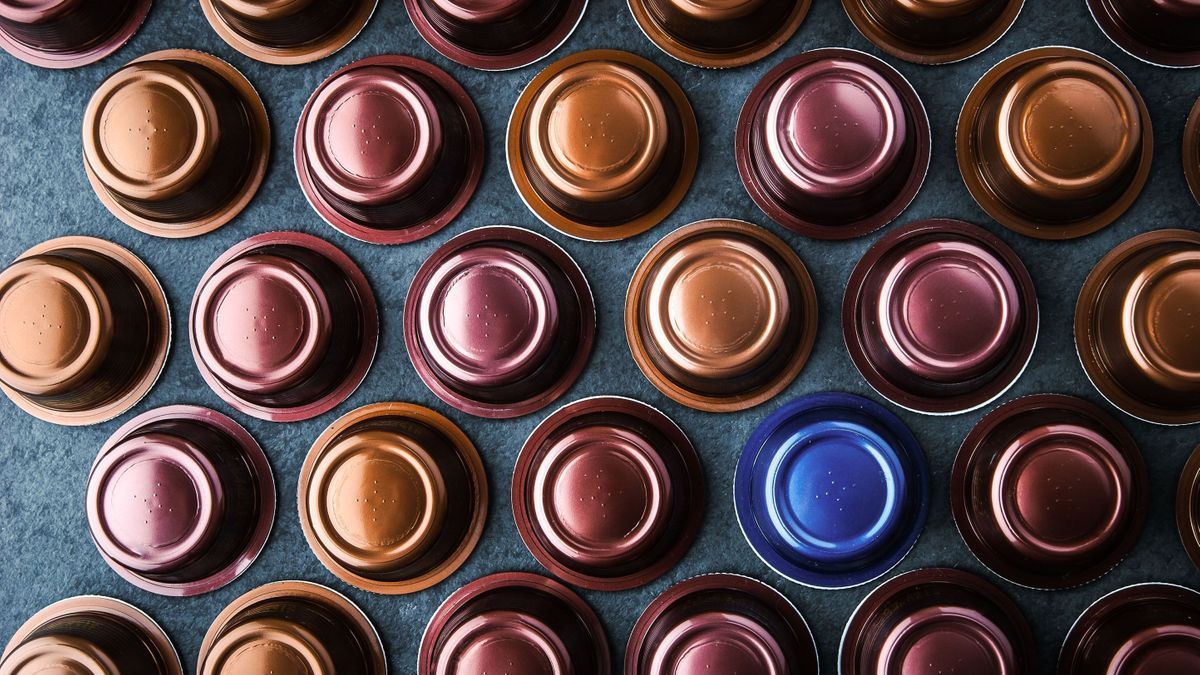
If yesterday the consumption of coffee was revolutionized by Nespresso with the concept of pods, the product which has become an everyday essential is undergoing a new evolution in line with the climate emergency. While the food industry giants are actively working on eliminating packaging, another path is emerging in laboratories, with coffee… without coffee! The kawa we sip today will not be that of tomorrow…
Cellulose, algae derivatives, sorbitol or even sodium chloride… This is the recipe for the latest innovation from the Keurig brand for making coffee pods. A novelty freshly revealed in a press release which is not like the others: the capsules in fact decompose on their own in the trash like coffee grounds. The Texan food giant thinks it has found the solution to avoid the plastic usually present in the making of coffee pods. This protective coating encloses the previously ground and pressed coffee beans. And kawa enthusiasts shouldn’t worry about sipping a lower quality of their favorite beverage that can still undergo high-pressure preparation. Experimental phases are underway to validate the invention, knowing that the start of marketing is planned for next fall. These new capsules must be used in a specific coffee machine capable of reading the different ranges of pods to adapt the preparation.
This innovation is of course reminiscent of the recipe for Coffee B, from the Café Royal brand, whose algae-based shell surprised many coffee drinkers when it was announced in 2022. Presented in the form of small balls, in which the coffee is contained, their whole advantage lies in the ability to degrade over the weeks depending on the humidity. A response considered effective in counterbalancing the ecological impact generated by the 100,000 tonnes of aluminum and plastic waste for which coffee pods are responsible. Last year, the General Director of Café Royal, Ghassan Kara, told Forbes a desire “to revolutionize the coffee sector and become the new standard for eco-responsible coffee consumption. To do this, we combine the advantages of capsule and grain solutions without their respective disadvantages.“.
From a technological revolution to an ecological evolution
In the same way that Nespresso revolutionized coffee consumption by launching its patented pod concept in the early 1990s, a new generation of capsules is rethinking the way we get that little morning kawa. The whole objective is to do without plastic or aluminum. For its part, Nespresso is nevertheless trying to keep its capsule concept alive by adapting it to the problem of the climate emergency. In 2022, the Swiss giant unveiled a pod designed from compostable paper following three years of research and development.
Before the design of the pods itself became the central subject, the question of the ecological footprint of coffee pods was initially addressed through the prism of recycling. A collection of used pods was first set up through a network of businesses accepting that consumers give them to them. According to Nestlé, the parent company of Nespresso, “in Switzerland, the commitment to reducing the carbon footprint of Nespresso capsules began in 1991 with the introduction of the first Nespresso recycling system“. In Europe, you can facilitate the recycling of your capsules by depositing them in a recycling center or via merchants in the Mondial Relay network. Subject to checking that your municipality has a suitable recycling system, you can also throw away the capsules of aluminum or plastic coffee in the yellow bin. But there is a catch: “to date, one in three sorting centers is equipped with an eddy current machine. It allows small aluminum such as coffee capsules, cans, medicine packs to be separated from the rest of the waste” explained Laurent Batisda of Citeo to the magazine 60 million consumers in 2023. Before even knowing if we can throw away throw away your pods, you still need to know if they are recyclable, which is not the case for half of users, the monthly said.
NO to diets, YES to WW!
Coffee (almost) without coffee
While coffee packaging has become the preferred area of development to reduce its carbon impact, another path seems to be emerging: that of laboratory kawa. A Parisian start-up called Stem wants to believe in the capacity of coffee cells that are stimulated under a microscope to obtain a more ethical product. This biotechnology research is part of the same development process as cellular meat, often referred to as in vitro steak. The young French company followed in the footsteps of a Finnish laboratory which had cultivated the cells of a coffee plant in a bioreactor, according to research results published in 2021.
Finally, in Ede, in the Netherlands, Northern Wonder bet on another concept by combining lupine seeds with barley, rye, chickpeas, figs, chicory, carob and blackcurrant to get as close as possible to the bitter and roasted flavor of coffee. A recipe that does not contain… any coffee! This tambouille actually resembles the mixture that can already be found on the shelves and which is intended for consumers wishing to avoid caffeine (pregnant women for example). This generally consists of malt, barley and chicory. In the case of this Dutch recipe, synthetic caffeine is also added.

